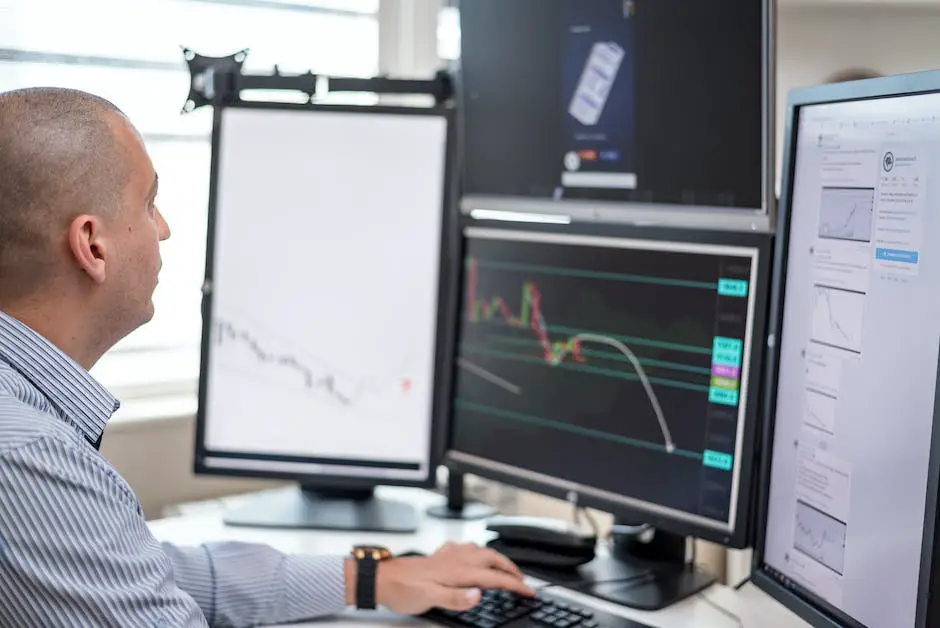In the dynamic world of financial markets, day trading attracts a lot of interest due to its potential for quick profits. A lot of people start day trading for quick profits and trade stocks throughout the day. Yet, much like any high-reward venture, it comes with its share of risks and complications. This treatise dives into the intricate scenario of day trading, beginning with a fundamental understanding of its concept, function, and how it differs from other forms of investment.
Beyond the basics, it explores the indispensable tools for successful trades, the crafting of effective strategies for instant returns on investments, and the mental discipline needed to navigate the often turbulent trading waters. Lastly, lest we forget, it highlights the legal and regulatory landscape that governs day trading, elucidating on compliance measures, requisite laws, and the role of regulators.
Understanding Day Trading
Understanding Day Trading and Its Basics
Day trading is a strategy employed by investors to buy and sell financial instruments within the same day. The core intention of this approach is to capitalize on small and swift price fluctuations in markets. In other words, day traders aim to make profits from the short-term movements in stock prices, currencies, commodities, or other financial assets instead of holding them for the long term.

Unlike long-term investment strategies, such as buy-and-hold, day trading is considerably more active. It requires continuous monitoring of markets, quick decision-making, and the ability to adapt strategies on the fly. On any given day, a day trader can execute several or even dozens of trades to maximize profits.
Day trading is rarely a casual activity – it’s a full-time job. For one to pursue day trading, they need to possess a deep understanding of markets and financial instruments, have effective risk management skills, and keep up-to-date with economic news.
Different Financial Instruments in Day Trading
There are several types of financial instruments or assets one can day trade, each with its pros and cons. The most common instruments include stocks, forex, futures, options, and cryptocurrencies.
- Stocks: This is one of the most popular assets for day trading as they are generally known to have sufficient volatility and liquidity – two crucial elements for day trading.
- Forex: The foreign exchange market offers high liquidity and operates 24 hours, making it an attractive market for day traders.
- Futures: Futures contracts are agreements to buy or sell a particular asset at a predetermined price at a future date. Day traders can profit from the price changes of the underlying asset.
- Options: Options provide the right, but not the obligation, to buy or sell a financial asset at a specific price before expiration. Options allow for various strategies that can limit risk and increase potential profits.
- Cryptocurrencies: These digital assets have attracted significant attention from day traders due to their extreme volatility. However, they also pose significant risks.
Understanding the Balance of Risk and Reward in Day Trading
Day trading, while potentially yielding impressive profits, also presents substantial risk. This balance of risk and reward in day trading is largely influenced by a variety of factors such as current market volatility, the trader’s own skills and level of experience, personal investment capital, and risk tolerance.
Benefits: When conducted correctly, day trading can lead to substantial financial gains. Traders who have developed an ability to anticipate market behavior and respond swiftly to shifts in volatility can make substantial profits. In addition, the flexibility offered by day trading — the ability to work from anywhere and at any time — makes it an appealing alternative to the conventional 9-5 job structure.
Potential Downsides: The risks involved in day trading are just as significant as the possible rewards. In adverse conditions, day traders may risk losing their entire capital investment. Furthermore, the high-stakes nature of the trade can create emotional stress. Day trading involves a significant time commitment, requiring continual monitoring of the markets to pinpoint opportune moments for trade. It is not usually recommended for individuals with minimal trading experience or a low risk tolerance.
In order to navigate the world of day trading successfully, it’s advisable to study market behavior, gain experience via simulated trading, and formulate a solid trading plan that considers both potential profits and risks. Furthermore, conducting regular reviews and critical analysis of trading patterns is key to a profitable day trading career.

Essential Tools for Day Trading
The Crucial Role of Tools and Technology in Day Trading
Effective day trading necessitates the use of a range of imperative tools and cutting-edge technologies, specially crafted to provide traders with competitive edge in the tumultuous arena of financial markets. From intricate trading platforms and intricate charting software, to high-speed internet and advanced technical indicators, when used judiciously, these digital armaments can greatly improve trading efficiency and amplify the chances of securing swift, lucrative returns.
Trading Platforms
Trading platforms are a crucial component of day trading. These software applications allow traders to execute orders, study price charts, and perform technical analysis. Reliable trading platforms come with real-time market price feeds, various order types, and live news feeds. Some advanced platforms even have features like Level II quotes and direct market access, which are crucial for day trading. Some prominent trading platforms include Thinkorswim, Interactive Brokers, and E-Trade.
Charting Software
Charting software is an invaluable tool for any day trader. These analytical tools provide detailed and up-to-date visual representations of market activity. They give traders the ability to track market trends, monitor price patterns, and study a variety of technical indicators. Some robust charting software even allows back-testing of trading strategies on historical price data. Charting software like TradingView and MetaStock offer a variety of customization options to suit individual trading styles.
Hardware Requirements
Hardware components like the computer system and monitors can greatly influence the efficiency of day trading. Day traders often need powerful computers with high processing speeds to execute trades efficiently without lag. Similarly, multiple monitors can help traders keep an eye on various chart windows and market indices simultaneously. High-speed solid-state drives (SSD) and a minimum of 16 GB RAM are usually recommended for effective trading.
Internet Connectivity
A fast, reliable internet connection is vital for day trading. It ensures real-time access to market data and facilitates swift trade execution. A connection that repeatedly drops can lead to missed trading opportunities or, worse, losses due to delayed order execution. It’s always crucial for traders to have a backup internet connection to mitigate any unexpected downtime.
Technical Indicators
Technical indicators are statistical tools used by day traders to evaluate market conditions and forecast price movements. They are derived from mathematical calculations based on price and volume data. Indicators like moving averages, relative strength index (RSI), and Bollinger Bands can help identify trend reversals, overbought/oversold conditions, and potential entry/exit points. A sound understanding of how to use and interpret these indicators can significantly boost trading performance.
Enhancing Efficiency with Proper Use of Trading Tools
It’s key to not only have the right trading tools but also to understand how to leverage them effectively. Quick tips and strategies for earning fast cash depends on being able to navigate trading platforms quickly. Traders should become experts at navigating their chosen trading platform, interpreting price charts, and utilizing technical indicators.
Additionally, it’s crucial to perform consistent updates and maintenance on both hardware and software to guarantee smooth trading operations. Alongside these practical aspects, continuous learning and upgrading of skills are essential for keeping up with changing market trends. With a proper understanding and application of these tools, day traders have a better opportunity for making swift profits in the markets.

How to Craft a Day Trading Strategy
Grasping the Day Trading Environment
Day trading is a strategy involving the purchase and sale of financial instruments such as stocks, options, futures, or forex within a single trading day. Since all positions are closed before the market shuts down for the day, there’s no risk associated with holding positions overnight. The main goal here is to generate quick profits through minor price fluctuations. Day trading necessitates a disciplined mindset and a comprehensive strategy built on technical and fundamental analyses along with sound risk management techniques.
Developing Your Day Trading Strategy
Crafting a coherent day trading strategy involves various elements like determining your trading style, identifying profitable trade setups, risk management, and using appropriate trading tools. Ideally, a day trading strategy should align with your trading goals, risk tolerance, and trading skills.
Some common day trading strategies include scalping, breakout trading, counter-trend trading, and momentum trading. Each of these strategies has its methodology, risk profile, and demands specific skill sets.
Scalping, for instance, involves making a large number of quick trades throughout the day to profit from tiny price fluctuations. Breakout trading strategy involves identifying and trading the breakouts from defined support and resistance levels. Momentum trading follows market trends, buying stocks moving upwards and selling short the ones moving downwards.
Risk Management in Day Trading
Risk management is the cornerstone of a successful day trading strategy. It involves defining how much capital you’ll risk on each trade (typically a small percentage of your total trading capital), setting stop losses to limit potential losses, choosing a favorable risk-reward ratio, and maintaining discipline to stick to your trading plan.
Remember, the goal of day trading isn’t to win every trade, but to come out with a net profit at the end of the trading day or week. A rule of thumb in day trading is never to risk more than 1% of your total trading capital on a single trade.
Backtesting Your Day Trading Strategy
Backtesting is the process of testing a trading strategy using historical market data before you use it for live trading. It helps in determining the viability of a trading strategy, providing insights concerning potential returns, drawdowns, risks, and robustness of a method.
Numerous trading platforms offer backtesting features. However, it’s vital to remember that past results aren’t always indicative of future performance as market conditions continuously evolve. So, periodically assess, adjust and optimize your strategy according to the market scenario.
The Essentials of Day Trading
Day trading isn’t a pursuit to be taken lightly. It necessitates diligent practice, ongoing education, and careful control of emotions. Staying informed with market news is crucial, as it significantly affects price movements. It may also be beneficial to specialize in one or two stocks, or a specific market segment, allowing for a more detailed understanding.
Keep track of all activity by using a trading journal to note your trades, strategies, and emotional responses – it will prove a useful reflector and learning device.

Psychology of Day Trading
The Importance of Psychology in Day Trading
Day trading goes beyond merely understanding the intricacies of the financial markets. It involves not just strategic analysis and rapid decision-making abilities but also a deep knowledge of one’s psychological responses. Traders often confront a range of emotions that can cause them to question their established strategies, shake their confidence, and impulsively react, which often results in costly mistakes.
Common Psychological Traps in Day Trading
One of the most common psychological traps in day trading is succumbing to the fear of missing out (FOMO). Traders often rush into trades fearing they might miss out on a potentially significant profit-making opportunity. However, such fear-driven decisions can often lead to poor trade choices.
Another trap is overconfidence bias, where traders often attribute profitable trades to their skills without acknowledging the role of market factors or luck. This can engender a false sense of invincibility leading to riskier trades.
Finally, traders can be lured into revenge trading, which happens when a trader loses on a trade and then hastily enters another to recover the loss. These emotionally charged decisions are usually devoid of sound reasoning and can exacerbate the dilemma.
Tips for Managing Emotions
One key measure to manage emotions is to stick to a well-annotated trading plan. This plan should include details like entry and exit strategies, amount of capital to be risked, and an explicit stop-loss level. A robust plan can limit emotionally charged reactions substantially.
Another significant aid is practicing mindfulness and meditative techniques. Such practices help enhance self-awareness and emotional control, cultivating a calm mind necessary for impartial decision-making.
Control Over Impulse Decisions
Impulse decisions in day trading typically stem from erratic emotions such as fear and excitement. Countering these impulses involve fostering patience, establishing disciplined routines, and maintaining a strong focus on the previously delineated trading strategy.
Moreover, frequent breaks during the trading day can help alleviate stress and keep impulsive decisions at bay. These breaks can provide necessary downtime to reflect on past trading decisions, enabling better control over future choices.
Discipline: A Key to Successful Day Trading
Discipline in day trading revolves around strictly adhering to the trading plan, managing risk, and being consistent in trade execution. It is not about winning every trade but staying unswervingly on track with the strategy in the midst of wins and losses.
Successful traders refrain from deviating from their plan, regardless of market uncertainties and emotional turmoil. They also understand that losses are part and parcel of trading and have sensible measures in place to minimize the impact of these losses.
Understanding the essence of day trading begins with developing the necessary mental resilience. Indeed, the psychological dynamics of day trading can be likened to the economic forces that drive the markets. The ability to maintain emotional stability, discipline, and solid decision-making skills cannot be overstated in day trading, particularly when the objective is to generate fast profits.

Legal and Regulatory Considerations
Grasping The Legalities and Regulatory Protocols of Day Trading
Day trading is often synonymous with prompt financial returns. Yet, it is crucial not to lose sight of the legal and regulatory parameters that govern these swift financial exchanges. To venture into this volatile yet lucrative domain of trading, a comprehensive understanding of these legal aspects is paramount.
Role and Impact of Regulatory Bodies
Primarily, Securities and Exchange Commission (SEC) and Financial Industry Regulatory Authority (FINRA) are the two key regulatory bodies that oversee all day trading activities in the U.S.
The SEC aims to protect investors, maintain fair, orderly, and efficient markets, and facilitate capital formation. They ensure all participants follow the defined rules for securities trading, take legal actions against those involved in fraudulent practices, and encourage full disclosure of information to the public.
FINRA, a non-governmental organization authorized by Congress, works under the SEC’s supervision. It helps in regulating member brokerage firms and exchange markets, ensuring they operate fairly and honestly.
Key Regulations and Laws Applicable to Day Trading
Day traders are subject to numerous laws and regulations to ensure fair trading practices. These laws can significantly influence your trading strategies and overall trading behavior.
The most significant of these is the Pattern Day Trader (PDT) rule, enacted by FINRA. It states that a pattern day trader is one who makes four or more day trades (buying and selling a security within the same day) in a five-day business period. Such traders must maintain a minimum equity of $25,000 in their brokerage accounts.
Additionally, the SEC imposes rules on short-selling (Regulation SHO), set to prevent fraudulent activities and manipulative short selling practices. It requires traders to borrow the securities they intend to short sell or have reasonable grounds to believe that they can be borrowed before trading.
Further, traders should be aware of rules around wash sales (IRS Rule), where a security sold at a loss and repurchased within 30 days cannot be claimed for tax deduction.
Ensuring Compliance While Trading
Ensure that you always maintain the minimum equity required for day trading. If the account falls below the limit, trading will be restricted until the equity level is restored.
Stay knowledgeable about rules around short selling and make sure to adhere to the regulations.
Keep accurate and detailed records of all your trading activities. These records serve as proof of your activities if audited by the IRS. They will also help you assess your trading performance over time.
Avoid engaging in manipulative or illegal trading practices such as churning, where a broker conducts excessive trading solely for generating commissions, or front-running, where a broker executes orders on a security for its own account while taking advantage of advance knowledge of pending orders from its customers.
Continuous Learning and Keeping Up-to-date
Laws and regulations for day trading are continuously evolving. Therefore, it’s important that you stay updated on these changes by regularly reviewing the SEC, FINRA, and IRS websites and subscribing to their newsletters if available.
While day trading offers the potential for quick profits, it’s equally important to comply with the relevant laws and regulations to avoid unnecessary risks and penalties. Investing your time in understanding these aspects can greatly enhance your success as a trader.

As a final point, trading in the fast-paced environment of the stock exchange is not for the faint-hearted. Comprehensive knowledge, tactical finesse, psychological discipline, and a keen understanding of legal obligations are all critical to success.
This compendium has endeavored to shed light on these fundamental aspects, providing a launchpad for anyone aiming to carve a niche in day trading. But remember, theory is just the beginning: the real proficiency in day trading transpires through continuous learning, practical experience, and honed intuition. So, strap yourself in and embark on this exciting journey into the world of day trading, armed with information and ready to conquer the financial frontier.





Leave a Reply